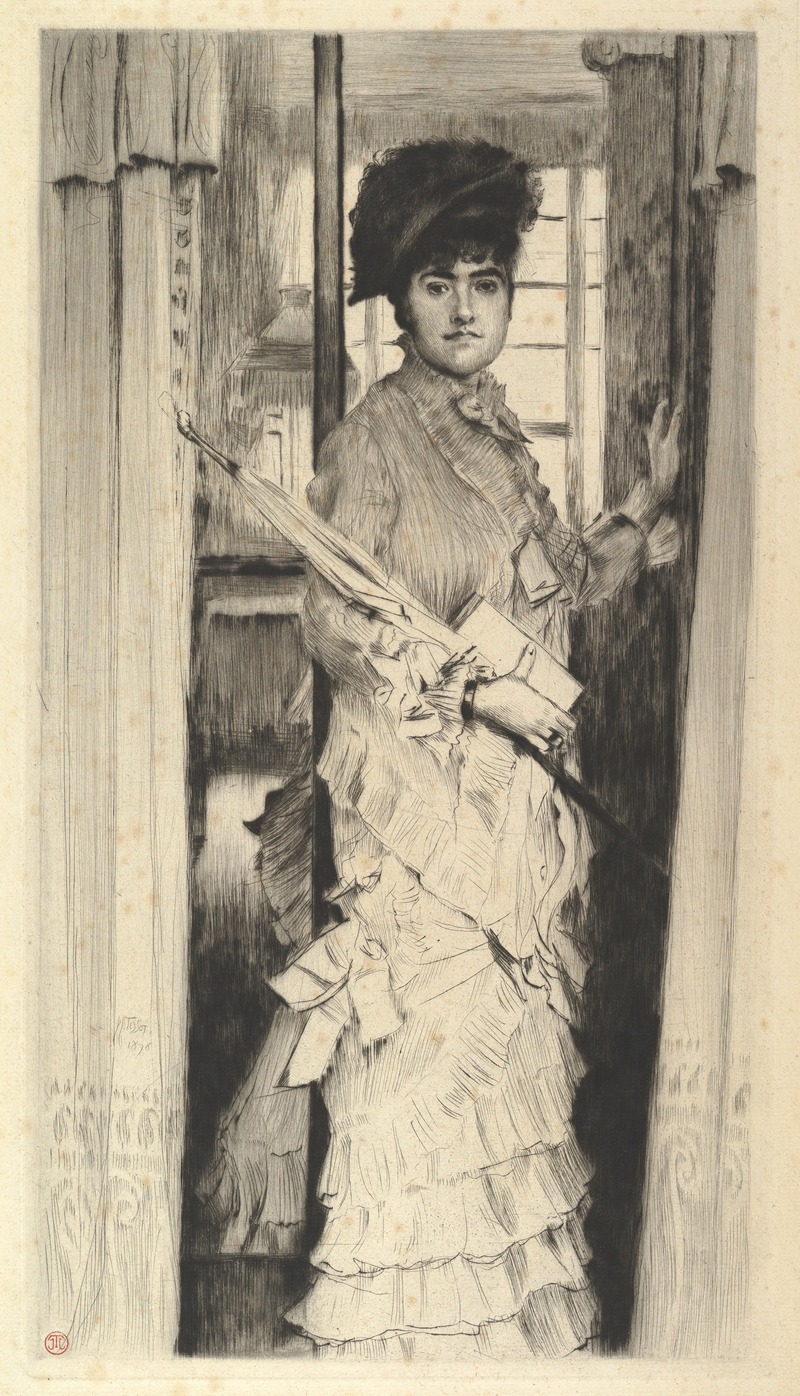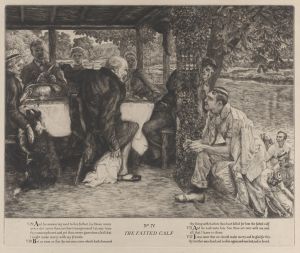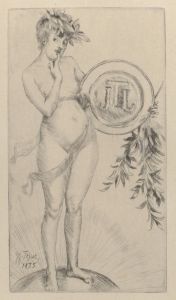
Portrait of Miss L…,or A Door Must Be Either Open or Closed
A hand-painted replica of James Tissot’s masterpiece Portrait of Miss L…,or A Door Must Be Either Open or Closed, meticulously crafted by professional artists to capture the true essence of the original. Each piece is created with museum-quality canvas and rare mineral pigments, carefully painted by experienced artists with delicate brushstrokes and rich, layered colors to perfectly recreate the texture of the original artwork. Unlike machine-printed reproductions, this hand-painted version brings the painting to life, infused with the artist’s emotions and skill in every stroke. Whether for personal collection or home decoration, it instantly elevates the artistic atmosphere of any space.
James Tissot's painting "Portrait of Miss L… or A Door Must Be Either Open or Closed" is an intriguing work that reflects the artist's keen interest in capturing the nuances of social interaction and fashion of the late 19th century. Tissot, a French painter known for his detailed and often enigmatic portraits, created this piece during a period when he was deeply engaged with the themes of modern life and society.
The painting is believed to have been completed around the 1870s, a time when Tissot had returned to Paris after spending several years in London. This period marked a significant phase in his career, as he was increasingly focused on portraying the elegance and sophistication of the Parisian bourgeoisie. His works from this era are characterized by their meticulous attention to detail, vibrant colors, and the depiction of contemporary fashion.
"Portrait of Miss L…" features a young woman, presumably identified as "Miss L," though her full identity remains unknown. She is depicted in an interior setting, dressed in the fashionable attire of the time. Tissot's skillful rendering of fabric and texture is evident in the intricate details of her dress, which is typical of his style. The title of the painting, "A Door Must Be Either Open or Closed," suggests a narrative element, possibly hinting at the complexities of social conventions or personal relationships.
The composition of the painting is carefully constructed, with the figure of Miss L placed prominently in the foreground. Tissot's use of light and shadow adds depth to the scene, creating a sense of intimacy and immediacy. The background, while less detailed, provides context and enhances the overall atmosphere of the work. The door, referenced in the title, is a subtle yet significant element, symbolizing choices or transitions, a common theme in Tissot's oeuvre.
Tissot's work is often noted for its psychological depth and the way it captures the subtleties of human expression and interaction. In "Portrait of Miss L…," the subject's pose and expression convey a sense of contemplation or introspection, inviting viewers to ponder her thoughts or the nature of her circumstances. This ambiguity is a hallmark of Tissot's portraits, which often leave room for interpretation and engage the viewer's imagination.
The painting is part of Tissot's broader exploration of the themes of modernity and the social dynamics of his time. His ability to blend realism with narrative complexity has earned him a lasting place in the history of art. "Portrait of Miss L… or A Door Must Be Either Open or Closed" exemplifies his talent for capturing the essence of his subjects while also reflecting the cultural and social milieu of the late 19th century.
Overall, this painting is a testament to Tissot's mastery of portraiture and his insightful commentary on the society in which he lived. Through his art, he offers a window into the world of his contemporaries, capturing both the elegance and the underlying tensions of the era.


















